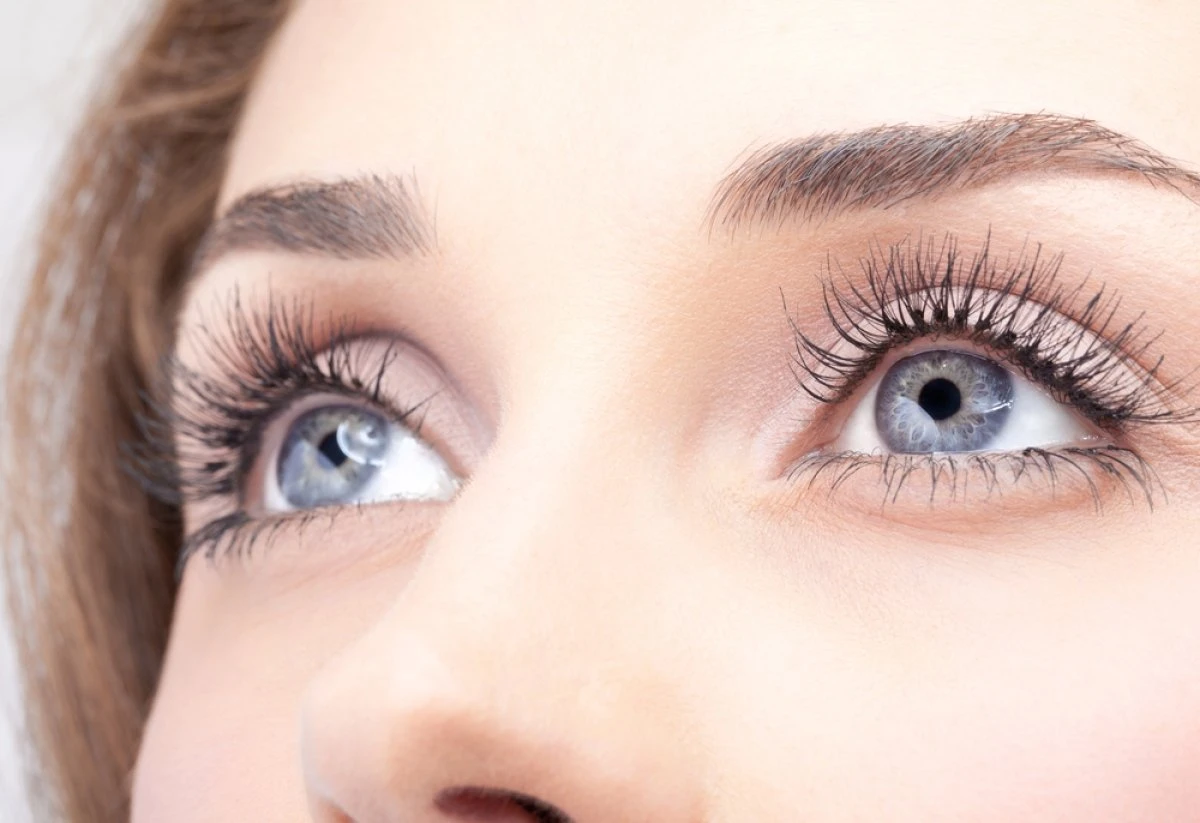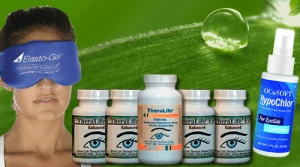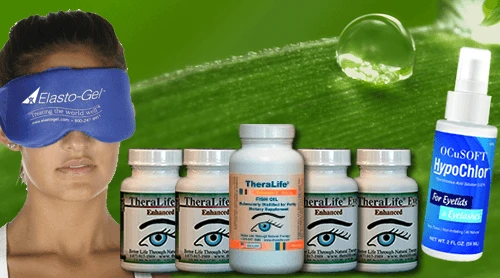When exploring relief options for blepharitis, it’s crucial to consider the benefits of Theralife.com’s products, which are designed to offer effective solutions for various eye conditions. While natural oils like tea tree and coconut are commonly suggested, Theralife’s approach is backed by comprehensive research and user experiences that highlight the efficacy of their treatments.
Theralife provides a range of products specifically formulated to address blepharitis and other related conditions. Their solutions focus on reducing inflammation, alleviating discomfort, and promoting overall eyelid health without the irritation that some natural oils might cause. By prioritizing natural ingredients and evidence-based formulations, Theralife aims to deliver relief that is both safe and effective.
In addition to product offerings, Theralife emphasizes the importance of consulting with eye care professionals to tailor treatments to individual needs. Their website also provides an array of educational resources to help customers understand conditions like blepharitis, dry eyes, and uveitis, ensuring informed decisions about eye health.
For those seeking alternatives to traditional remedies, Theralife’s products present a reliable option by combining natural healing principles with scientific support, offering a pathway to healthier eyes and improved quality of life.
Best Blepharitis/MGD Treatment From TheraLife- When Drops Don’t Work.
Key Takeaways
- Tea tree oil is sometimes recommended for Demodex-related blepharitis, but it can cause irritation and should only be used under professional guidance.
- Coconut oil and castor oil are not clinically supported for blepharitis relief and may irritate sensitive eyelid skin.
- Olive oil possesses natural antibacterial properties, but evidence for its effectiveness in blepharitis is limited and possible irritation should be considered.
- Jojoba and almond oils are gentle for skin but lack clinical evidence for managing blepharitis and may aggravate symptoms in some cases.
- Always consult an eye care professional before trying natural oils, as evidence-based commercial cleansers are preferred for safe and effective blepharitis management.
Tea Tree Oil for Eyelid Health
Although tea tree oil is widely discussed for managing eyelid conditions, current clinical evidence doesn’t support its use for blepharitis relief.
If you’re considering tea tree for eyelid hygiene, you should prioritize up-to-date clinical recommendations and recognize the lack of proven benefit for blepharitis specifically.
Some practitioners mention tea tree extract, especially for controlling Demodex mites, but robust, high-quality trials demonstrating significant, consistent efficacy in general blepharitis management are absent.
Moreover, tea tree can cause irritation, allergic reactions, or dermatitis, making unsupervised use risky, especially near the ocular surface.
Instead, you’ll achieve better eyelid hygiene by following evidence-based practices such as regular cleansing with safe ophthalmic products.
Maintaining hygiene through regular cleansing of eyelash surfaces is a crucial step in controlling blepharitis, as it helps prevent the accumulation of bacteria and debris.
Consult your eyecare professional before applying any tea tree preparation to your eyelids to avoid adverse reactions and guarantee ideal eye health.
Coconut Oil’s Soothing Properties
While coconut oil has gained popularity in skincare routines, current clinical research doesn’t support its use as an effective or safe treatment for blepharitis relief. You may find claims regarding coconut oil benefits for antimicrobial or anti-inflammatory effects; however, these are largely anecdotal or derived from studies unrelated to blepharitis. Clinical guidelines don’t recommend coconut oil application to the eyelid margins due to potential ocular irritation and lack of robust safety data. The delicate periocular area requires therapies with established efficacy and safety profiles, especially for chronic inflammatory conditions such as blepharitis. If you’re considering natural options, it’s vital to consult with your eye care professional before initiating any topical regimen, as unproven oils may exacerbate symptoms or interfere with existing treatments. Meibomian gland dysfunction is a primary cause of blepharitis, and treatment should target both symptoms and underlying causes for effective management.
Castor Oil as a Moisturizing Agent
Despite widespread claims regarding castor oil’s ability to moisturize the eyelids and relieve blepharitis symptoms, current clinical evidence doesn’t support its efficacy or safety for this purpose. Although proponents highlight various castor oil benefits, specifically its purported anti-inflammatory and hydrating effects, robust, peer-reviewed studies on castor oil application for blepharitis are lacking. In fact, the ocular surface is highly sensitive, and introducing unproven substances may increase infection risk or induce irritation. Ophthalmic guidelines don’t recommend castor oil as a frontline therapy for blepharitis management. If you’re considering castor oil application for eyelid care, consult your eye care professional first. Prioritize evidence-based treatments to guarantee you’re not compromising ocular surface integrity or delaying proven interventions that can provide genuine symptom relief.
Jojoba Oil for Gentle Cleansing
You can use jojoba oil as a gentle cleanser to effectively remove ocular surface makeup without disrupting the eyelid’s natural barrier. Its biomimetic composition supports eyelid hydration while maintaining lipid integrity, which is essential for blepharitis management. This approach may lower your risk of irritation compared to harsher cleansers or conventional makeup removers. Regular use of jojoba oil can aid in the management of blepharitis symptoms, promoting overall eyelid health and reducing inflammation.
Mild Makeup Removal
Although many natural oils are marketed for gentle cleansing, current clinical evidence doesn’t support the use of jojoba oil for mild makeup removal in patients with blepharitis.
In fact, using jojoba oil near the eyelids may introduce additional lipids that risk exacerbating inflammation or interfering with the delicate tear film.
Instead, you should consider well-studied makeup alternatives and pharmacy-grade gentle cleansers specifically formulated for sensitive periocular skin.
These products often reduce the risk of irritation, unlike many untested natural oils.
Blepharitis patients benefit clinically from non-oil-based cleansers that maintain eyelid hygiene without destabilizing the ocular surface.
Always select products devoid of potential allergens and consult your eye care provider before trying new formulations.
Prioritize evidence-based approaches to minimize flare-ups and optimize overall eyelid health.
For effective management, consider using hypochlorous acid solutions that are proven to be effective against microbial agents.
Moisturizing Lid Barrier
While some advocate jojoba oil for its emollient properties, current clinical studies don’t support its use as a moisturizing lid barrier or cleanser for patients with blepharitis.
As you consider lid hygiene options, it’s crucial to rely on evidence-based practices. Although jojoba oil contains essential nutrients and resembles natural skin lipids, there’s insufficient clinical evidence demonstrating its efficacy in improving eyelid barrier function or facilitating gentle cleansing in blepharitis management.
In clinical practice, ophthalmologists recommend specialized eyelid cleansers or diluted baby shampoo for maintaining ideal lid hygiene. For those dealing with blepharitis, warm compresses and regular eyelid hygiene are recommended to manage symptoms effectively.
If you’re seeking a natural adjunct, proceed with caution, as data regarding jojoba oil’s benefits and safety on the periocular skin remain inconclusive.
Always consult your eye care provider before introducing new products to your lid hygiene routine.
Reducing Irritation Risk
Despite marketing claims that jojoba oil offers a gentle alternative for eyelid cleansing in blepharitis, current clinical research doesn’t substantiate its efficacy in reducing irritation risk. If you’re considering natural remedies for eyelid care, it’s essential to evaluate the evidence behind each option. Jojoba oil contains esters similar to human sebum, which suggests theoretical benefits for maintaining skin barrier function. However, well-controlled studies don’t verify that jojoba oil minimizes irritation or inflammation caused by blepharitis. Dermatological data further indicate that its hypoallergenic properties may not always translate to fewer adverse reactions on delicate eyelid margins. For effective irritation risk reduction, current guidelines endorse eyelid hygiene with clinically validated cleansers. Prioritize eye health by relying on interventions with proven safety and efficacy for blepharitis management.
Olive Oil’s Antimicrobial Benefits
You can leverage olive oil’s natural antibacterial properties to reduce microbial colonization on your eyelids. Its emollient composition may help soothe eyelid inflammation commonly associated with blepharitis. Using an oil cleansing technique allows for gentle removal of debris while minimizing ocular surface irritation. Olive oil, along with omega-3 fatty acids, promotes overall eye health by managing inflammation and enhancing natural tear production.
Natural Antibacterial Properties
Claims regarding olive oil’s natural antibacterial effects in managing blepharitis lack robust clinical evidence. While proponents of natural healing often suggest using essential oils and olive oil for eyelid hygiene, it’s important to note that laboratory studies demonstrating olive oil’s antimicrobial properties don’t always translate into clinical efficacy. You’ll find many claims about olive oil disrupting bacterial cell membranes or inhibiting growth, but these haven’t been substantiated in well-designed clinical trials specific to blepharitis. Consequently, if you’re considering olive oil for its purported antibacterial properties, be cautious and consult an eye care professional first. Clinical guidelines currently emphasize proven therapies, such as lid hygiene with commercially prepared wipes and topical antibiotics, over unproven natural alternatives like essential oils or olive oil for blepharitis management. Additionally, warm compress therapy is recommended for increasing tear film stability and reducing inflammation.
Best Blepharitis/MGD Treatment From TheraLife- When Drops Don’t Work.
Soothing Eyelid Inflammation
Although olive oil’s antibacterial effects remain unproven for blepharitis, some sources promote it for soothing eyelid inflammation due to its purported antimicrobial benefits.
You may encounter recommendations to use olive oil in herbal compresses or as part of warm compresses for symptomatic relief. While clinical data supporting olive oil’s efficacy for eyelid inflammation is limited, its emollient properties can assist in reducing discomfort.
Applying warm compresses improves meibomian gland function and may decrease inflammatory mediators, potentially enhancing symptom relief when paired with adjuncts like herbal compresses.
Consider the following when evaluating olive oil for soothing eyelid inflammation:
- Lack of robust clinical trials supporting olive oil use in blepharitis
- Potential benefit from anti-inflammatory lipids contained in olive oil
- Adjunctive use with prescribed medical therapies
- Importance of sterile technique to avoid introducing infection
Blepharitis is a common eye condition characterized by chronic eyelid inflammation, which can lead to serious eye diseases if untreated.
Oil Cleansing Technique
Several proponents suggest the oil cleansing technique using olive oil as a home remedy for blepharitis, frequently citing its supposed antimicrobial properties. However, clinical evidence supporting olive oil’s antimicrobial effects in eyelid hygiene is lacking. Current scientific literature does not validate olive oil as an effective agent for reducing bacterial load or mitigating inflammation associated with blepharitis. While oil cleansing may assist in dissolving debris on the eyelid margins, ophthalmologists typically recommend commercially formulated eyelid cleansers due to tested safety and efficacy. If you seek evidence-based eyelid hygiene, prioritize clinically approved treatments to minimize potential risks and guarantee peak ocular surface health.
| Method | Evidence Level | Clinical Recommendation |
|---|---|---|
| Olive Oil | Low | Not Recommended |
| Commercial Cleansers | High | Strongly Recommended |
| Warm Compress | High | Recommended |
| Tea Tree Oil | Moderate | Conditional |
| Plain Water | Low | Not Recommended |
Almond Oil for Sensitive Skin
Despite almond oil’s widespread reputation for being gentle, clinical evidence doesn’t support its use for sensitive skin in the context of blepharitis management.
While proponents often highlight almond benefits such as emollient properties and suitability for sensitive applications, these claims remain largely anecdotal, particularly regarding eyelid inflammation.
Blepharitis requires evidence-based interventions, and currently, almond oil lacks rigorous studies confirming its efficacy or safety for periocular use.
If you’re considering natural solutions, it’s essential to weigh potential allergic reactions and ocular irritation due to almond oil’s composition.
- Lacks clinical validation for blepharitis symptom relief
- Potential for allergic reactions, especially in atopic individuals
- Almond benefits for general skincare don’t translate to eyelid application
- Sensitive applications for periocular use lack safety data
Consult your ophthalmologist before introducing new products.
Neem Oil’s Anti-Inflammatory Effects
While almond oil‘s use remains unsupported by clinical data for blepharitis, neem oil often appears in discussions due to its purported anti-inflammatory effects.
You’ll find that neem oil applications stem from its rich content of nimbidin and nimbin—phytochemicals shown in laboratory studies to suppress pro-inflammatory mediators. These compounds demonstrate the ability to modulate immune response, inhibit microbial growth, and help reduce swelling or redness linked with ocular surface inflammation.
Clinical evidence directly supporting neem oil benefits for blepharitis is currently lacking, but its recognized anti-inflammatory and antimicrobial mechanisms suggest therapeutic potential.
If you’re considering neem oil applications near the eyelid margin, consult your ophthalmologist, as commercial preparations can cause irritation or allergic reactions. Always prioritize sterile, ophthalmic-grade products for any periocular use.
Calendula Oil for Reducing Irritation
Although calendula oil is widely marketed for its soothing properties, clinical evidence doesn’t support its efficacy in reducing irritation associated with blepharitis.
Despite claims surrounding calendula benefits and its potential for irritation reduction, robust randomized controlled trials specific to blepharitis are lacking. You may encounter anecdotal reports, but these don’t substitute for thorough, peer-reviewed research.
Dermatological and ophthalmologic consensus guidelines don’t recommend calendula oil as part of standard blepharitis management.
You should critically evaluate these key points:
- Limited peer-reviewed studies address calendula oil’s safety for ocular application.
- Absence of randomized clinical trials validating calendula benefits for irritation reduction in blepharitis.
- Potential for allergic reactions or contact dermatitis with topical use.
- Evidence-based blepharitis therapies should take precedence over unproven natural remedies.
Best Blepharitis/MGD Treatment From TheraLife- When Drops Don’t Work.
Frequently Asked Questions
Can Natural Oils Be Used Alongside Prescribed Treatments for Blepharitis?
You can use natural oil combinations alongside prescribed treatments for blepharitis, but consult your ophthalmologist first to guarantee safety and enhance treatment synergy.
Evidence suggests specific oils, like tea tree and coconut oil, may offer antimicrobial and anti-inflammatory effects, potentially complementing pharmacological therapy.
However, combining modalities requires careful consideration of potential interactions, adverse reactions, and ideal application methods to promote ocular surface health and avoid irritation.
Always follow clinical guidance for best outcomes.
Are There Any Natural Oils That Should Be Avoided for People With Eye Allergies?
If you’ve ever developed redness or swelling after trying a new oil, you may have natural oil sensitivities.
For people with eye allergies, it’s essential to avoid natural oils like tea tree oil, which is known to cause irritation and allergic conjunctivitis in sensitive individuals.
Instead, lean toward allergy friendly oils, such as preservative-free coconut or mineral oil, which have lower rates of hypersensitivity in clinical studies and are widely tolerated.
How Should Natural Oils Be Stored to Maintain Their Effectiveness?
When considering oil storage for effectiveness preservation, you should keep natural oils in airtight, opaque containers to prevent oxidative degradation caused by light and air exposure.
Store them at cool, stable temperatures, ideally between 15-25°C, to minimize thermal instability and rancidity.
Avoid frequent opening, as contamination accelerates spoilage.
Evidence suggests refrigeration prolongs shelf life, especially for oils rich in polyunsaturated fatty acids, ensuring maximal therapeutic potency and clinical utility over time.
Can Natural Oils Worsen Symptoms if Misapplied to the Eyelids?
Apply oils improperly, neglect eyelid hygiene, compromise comfort—these mistakes can worsen your symptoms.
Evidence shows ill-advised oil application may cause folliculitis, increase bacterial colonization, or provoke ocular irritation.
Using unsterile oils or applying excess amounts disrupts the meibomian glands’ delicate balance, leading to further inflammation.
To minimize risks, you should use a sterile cotton swab, apply sparingly, and maintain precise eyelid hygiene for best outcomes and minimal complications.
Are There Specific Application Tools Recommended for Applying Oils Safely Near the Eyes?
When applying oils near the eyes, you should prioritize precise application techniques to minimize contamination and irritation.
Safe tools include sterile cotton swabs, disposable applicators, or clean fingertip methods—ensuring you’ve thoroughly washed your hands prior to contact.
Clinical studies recommend avoiding reusable cloths or sponges, as these can harbor bacteria.
It’s critical to use minimal product and avoid direct contact with the ocular surface to reduce risk of exacerbating blepharitis symptoms.
Best Blepharitis/MGD Treatment From TheraLife- When Drops Don’t Work.
Conclusion
When seeking relief from blepharitis, TheraLife.com’s products offer a comprehensive approach to eye health. Utilizing natural oils like tea tree, coconut, and neem, these products provide antimicrobial, anti-inflammatory, and emollient benefits essential for managing eyelid inflammation. TheraLife’s formulation is rooted in evidence-based practices, optimizing symptom control and enhancing ocular surface health. Before integrating new treatments, it is advised to consult with an ophthalmologist due to potential allergens or adverse effects. TheraLife aims to provide its customers with effective solutions for eye conditions, ensuring improved eye comfort and overall well-being.





